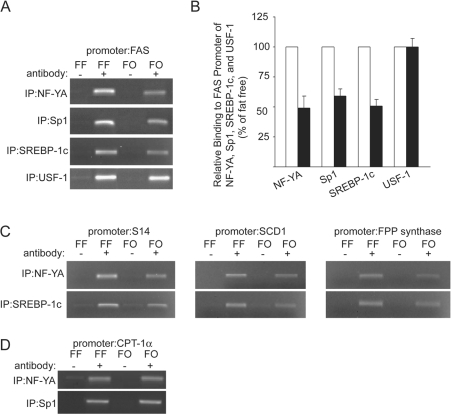Figure 6. Dietary PUFA decrease NF-Y, Sp1 and SREBP-1c binding to the promoters of several PUFA-sensitive genes.
(A) ChIP analysis of the Fasn promoter was conducted using livers from rats fed with the FF or FO diet. Chromatin fragments imunoprecipitated with anti-NF-Y, anti-Sp1, anti-SREBP-1c and anti-USF-1 antibodies (+) were amplified by PCR with primers spanning the proximal PUFA-sensitive region of the rat Fasn gene promoter (−153 to −2 bp). Immunoprecipitation with normal goat IgG (the source of the NF-YA immunoprecipitation antibody) and normal rabbit IgG (the source of the Sp1, SREBP-1c and USF-1 immunoprecipitation antibodies) were used as negative controls (−). The results shown are representative of three to six individual experiments. (B) The results of the experiments displayed in (A) were quantified by measuring the density of the PCR products separated on agarose gels. The numbers are derived from the average density of the PCR products from the liver samples from rats fed the FO diet (closed bars) compared with the average intensity of those from rats fed an FF diet (open bars), which are set at 100%. (C) Chromatin immunoprecipitated by the NF-YA and SREBP-1 antibodies was amplified using primers spanning the PUFA-sensitive proximal promoter regions of S14 (left-hand panel), Scd1 (middle panel), and Fdps (FPP synthase; right-hand panel). The PCR products are representative of three to six individual experiments. (D) Chromatin immunoprecipitated by the NF-YA and Sp1 antibodies was amplified using primers spanning the NF-Y and Sp1 sites of the Cpt-1α promoter. The PCR products are representative of three to six individual experiments.

